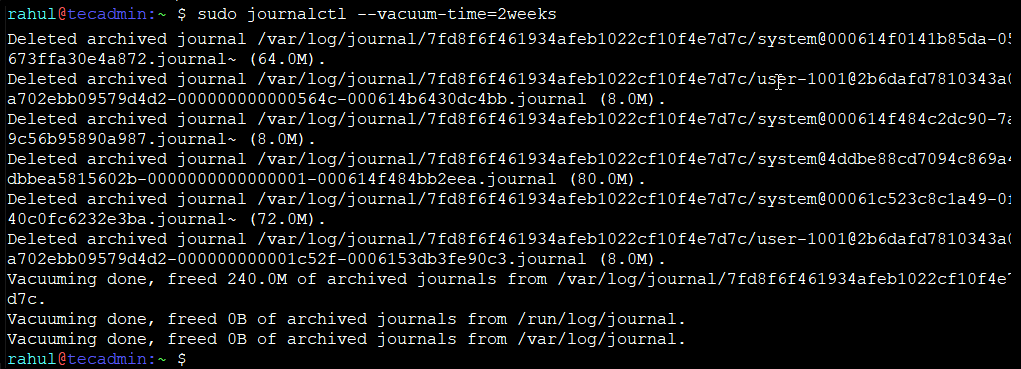Linux systems keep many logs to help monitor and troubleshoot the system. One important log directory is /var/log/journal, which can sometimes grow too large and use up valuable disk space. In this guide, we’ll show you how to safely clear this directory. This guide is perfect for beginners, so don’t worry if you’re new to Linux!
What is /var/log/journal?
The /var/log/journal directory stores systemd journal logs. These logs contain information about various system services and can be useful for diagnosing problems. However, if left unchecked, these logs can grow and consume a lot of disk space.
Why Clear the Journal Logs?
Clearing the journal logs can help free up disk space and keep your system running smoothly. However, it’s important to do this safely to avoid losing important log information.
Step-by-Step Guide
Let’s get started with the steps to safely clear /var/log/journal.
Step 1: Open the Terminal
First, you need to open the terminal. You can usually find the terminal in your system’s applications menu.
Step 2: Check Disk Space Usage
Before clearing the logs, it’s a good idea to check how much space they are using. Use the following command:
sudo du -sh /var/log/journal
This command will show you the size of the journal directory.
Step 3: View Journal Logs
You can view the journal logs using the journalctl command. For example, to see the most recent logs, use:
journalctl -r
This command will show the logs in reverse order (most recent first).
Step 4: Clear Journal Logs in Linux
To safely clear the journal logs, use the journalctl command with the --vacuum-time option. This option allows you to keep logs for a certain period (e.g., 2 weeks). Logs older than this period will be deleted.
For example, to keep logs from the last two weeks, use:
sudo journalctl --vacuum-time=2weeks

You can adjust the time period as needed. Other options include --vacuum-size to keep a certain amount of log data (e.g., 500M for 500 megabytes).
sudo journalctl --vacuum-size=500M
Step 5: Verify the Changes
After clearing the logs, check the disk space usage again to see how much space has been freed:
sudo du -sh /var/log/journal
This will help you confirm that the logs have been cleared.
Step 6: Set Up Automatic Log Management
To avoid manually clearing the logs in the future, you can set up automatic log management. Create a configuration file in /etc/systemd/journald.conf.d to specify retention policies.
For example, create a file named 99-custom.conf:
sudo nano /etc/systemd/journald.conf.d/99-custom.conf
Add the following lines to keep logs for two weeks and limit the log size to 500MB:
[Journal]
SystemMaxUse=500M
MaxRetentionSec=2week
Save the file and restart the systemd-journald service:
sudo systemctl restart systemd-journald
Conclusion
Congratulations! You’ve successfully cleared the /var/log/journal directory and set up automatic log management. Regularly managing your logs can help keep your Linux system running smoothly and free up valuable disk space. If you have any questions or need further assistance, don’t hesitate to ask.


1 Comment
Thanks for this post. Saved me a lot of time (needed to clean up, didn’t know –vacuum.